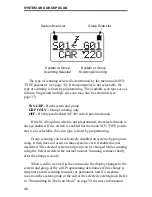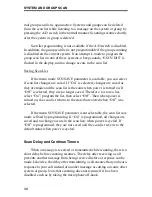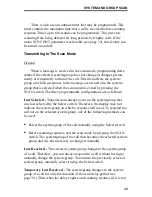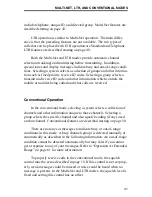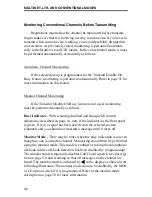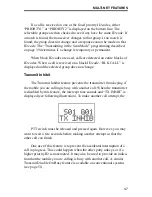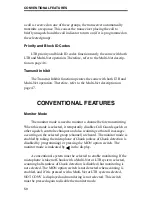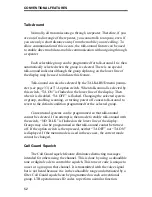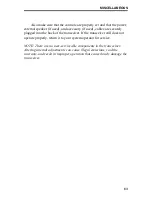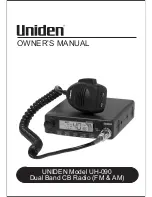
CONVENTIONAL FEATURES
50
a call is received on one of these groups, the transceiver automatically
transmits a response. This causes the transceiver placing the call to
briefly unsquelch and the call indicator to turn on (if it is programmed on
the selected group).
Priority and Block ID Codes
LTR priority and block ID codes function nearly the same with both
LTR and Multi-Net operation. Therefore, refer to the Multi-Net descrip-
tion on page 46.
Transmit Inhibit
The Transmit Inhibit function operates the same with both LTR and
Multi-Net operation. Therefore, refer to the Multi-Net description on
page 47.
CONVENTIONAL FEATURES
Monitor Mode
The monitor mode is used to monitor a channel before transmitting.
When this mode is selected, it temporarily disables Call Guard squelch or
other squelch control techniques and also scanning so that all messages
occurring on the selected group (channel) are heard. The monitor mode is
enabled by taking the microphone off-hook (unless off-hook detection is
disabled by programming) or pressing the MON option switch. The
monitor mode is indicated by
in the display.
A conventional system must be selected to enable monitoring. If the
microphone is taken off-hook with a Multi-Net or LTR system selected,
scanning halts (unless off-hook detection is disabled) but monitoring is
not selected. The MON option switch is not detected when scanning is
enabled, and if it is pressed with a Multi-Net or LTR system selected,
NOT CONV is displayed and monitoring is not selected. This switch
must be pressed again to disable the monitor mode.

